School of Integration: meeting cultures
In March 2019, Cuban artist and activist Tania Bruguera put migration and art as a political act at the center of discussion when coming to Bologna to present two special projects during the ten days of Atlas of Transitions Biennial “HOME” : Referendum and School of Integration.
School of Integration was conceived for the festival as a temporary school, which inverts the point of view, offering a series of day-to-day lessons conducted by the communities of foreigners residing in Bologna. Body and artisan skills, oral poetry, symbolic practices, culinary traditions, musical contaminations formed an intrinsic part of the timetable. With the object of testing new forms of teaching across cultures, entering into dialogue with local associations was a one of the high-priorities in the event’s planning phase. Centro Interculturale Zonarelli was the core contributor that supported the festival during the entire project, from organising to implementing. Situated in Bologna’s San Donato district, the multicultural center provides opportunities for interactions in which linguistic and cultural diversity can be negotiated through everyday practices of contact and exchange. In the process of relationship building with the communities residing on the territory, Zonarelli worked as a powerful go-between, facilitating the encounter with the associations’ members to discuss formats and contents. The curriculum that was designed didn’t merely consist in conveying knowledge from countries of origin, but worked also as a space for expression, debate and mutual understanding, a junction where two (or more) cultures cross.
In an interview on Exibart, Tania Bruguera explains “School of Integration works on the intersection between art and pedagogy. Here, again, the project takes possession of a structure of power. Since 2005 I have been trying to submit this idea. For a long time nobody was interested in realizing it. But there you are, it is here in Italy, that an open city like Bologna receives it for the first time, as a pilot project. My reference is “transculturalisation”, a term invented by Fernando Ortiz, according to whom when two cultures meet a new one emerges. The idea is to activate a series of lessons or meetings to experience other cultures along with their knowledge, history, skills, beliefs and customs (…). Through my artistic work I always strive to activate processes from which local communities can benefit, so that they can become self-sustainable after passing the torch. Eventually, I always have to leave the context in which I got in. This reminds me of my contribution as an artist, thus from a position of privilege, at the service of the collective body. At the last Manifest12 in Palermo I worked with activists from No MUOS and I didn’t want my name to appear. Then they told me that it was important to make it visible to derive benefit from it, so I accepted. Hence the question: how can we use our privileges? I believe they shouldn’t be accumulated, but shared. In sharing privileges, and sharing cultures, we abolish borders.”
Faithful to this mindset, School of Integration made its debut on 1st March, the opening day of the second edition of Atlas of Transitions Biennial, entitled “Home” . Ten days of events to experience a collective approach to art, calling inhabitants to take up space, action, or the discussion on current migration-related issues, with regard to embodied narratives, along with their roots, boundaries and glance at the future. In the middle of various performances, concerts, seminars, and Tania Bruguera’s parallel participatory project “Referendum”, ten lessons took place on a daily basis, in the main hall of the festival’s headquarters, the DAMSLab, a university facility rearranged for this purpose, with an equipped stage, tables, seats and pillows - a welcoming environment where anyone could come in and get involved. Everyday, it was possible to listen and learn from a different community, exploring different narrations and nurturing intercultural competence. The crowd checking the schedule could pick among a wide variety of subjects, meanwhile some participants attended every single class, appreciated for their noteworthy arguments and captivating presentations. Ribka Sibhatu is an Eritrean poetess who speaks five languages, and is the lecturer who inaugurated the School, with a lesson about contemporary Eritrean poetry, the “aulo”, the bardic songs performed during celebrations to pay tribute to the ancestors, accompanying humans until and beyond their death and making them eternal through the continuity of memory. While coffee is being poured, there is time for eyes to meet, and first words to be exchanged between the participants and the teacher. Passing from the diversity of Eritrea’s languages to myths, beliefs and games, it was also the occasion for Ribka to tell anecdotes of her experience as an Eritrean who fled her country and subsequent to Ethiopia and France settled in Rome. The audience was very active, willing to join in practical examples of traditions and lifestyle like playing knucklebones, also called “astragalus”, and how to braid hair.
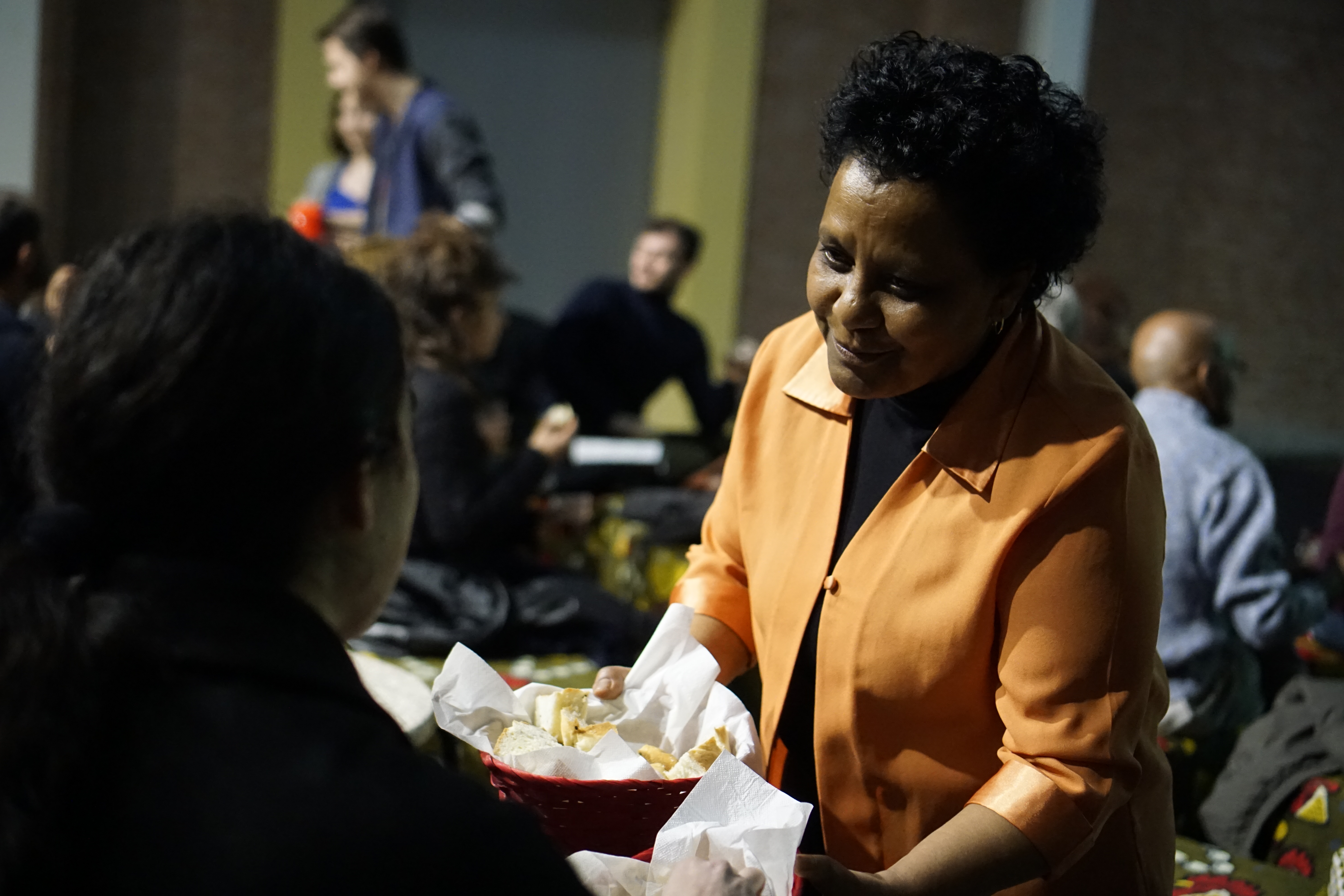
At the end, Elena, one of the participants, shares her thoughts: “Not only have I learned a lot more about Eritrea but I also discovered a beautiful tradition. For instance, I was really touched by the stories about death, those linked to fairy-tales, poems and proverbs. It felt liberating. Her lesson provided a sense of serenity in me, thanks to her different way of seeing things. She explained how the encounter between cultures could become a source of wealth. Ribka taught us to look at death from another perspective, as something soothing. In the Eritrean culture, it would be a curse if death didn’t arrive.”
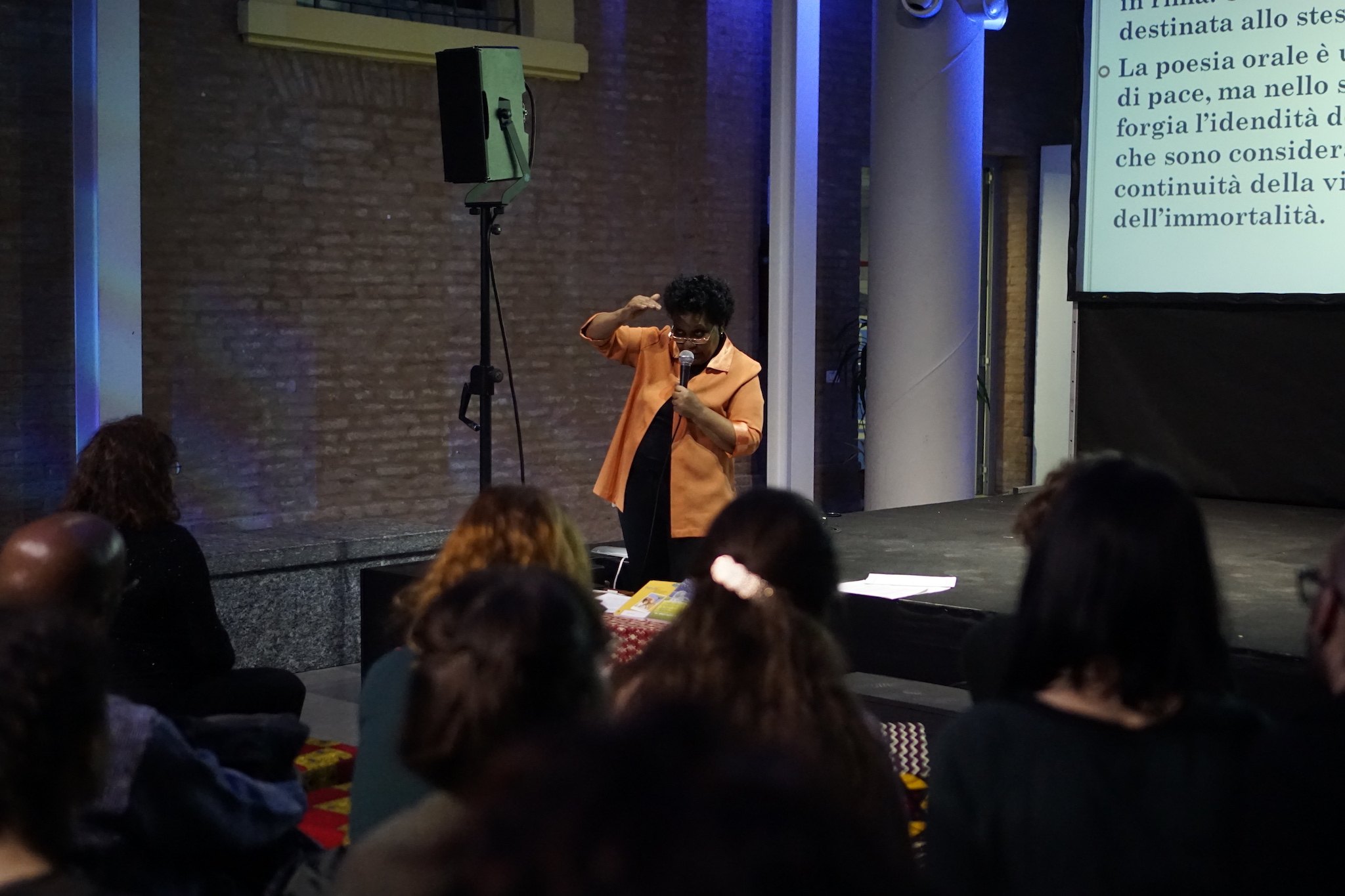
On the next day, the second lesson transformed the DAMSLab’s hall configuration from a classic classroom set up into an African tailoring shop. Surrounded by sewing machines and beautiful textiles with infinite designs, the members from Vicini D’Istanti association guided the audience through an ancient West African art form, the wax prints and the numerous hidden meanings behind the fabrics used in cultures of Ghana, Mali, The Gambia, Nigeria, Ivory Coast. Production techniques, proverbs, symbols were thoroughly explained, especially those regarding family, marriage, jealousy, divorce, the importance of children, seduction, faithfulness, social status…Each piece of fabric has a unique story to communicate.
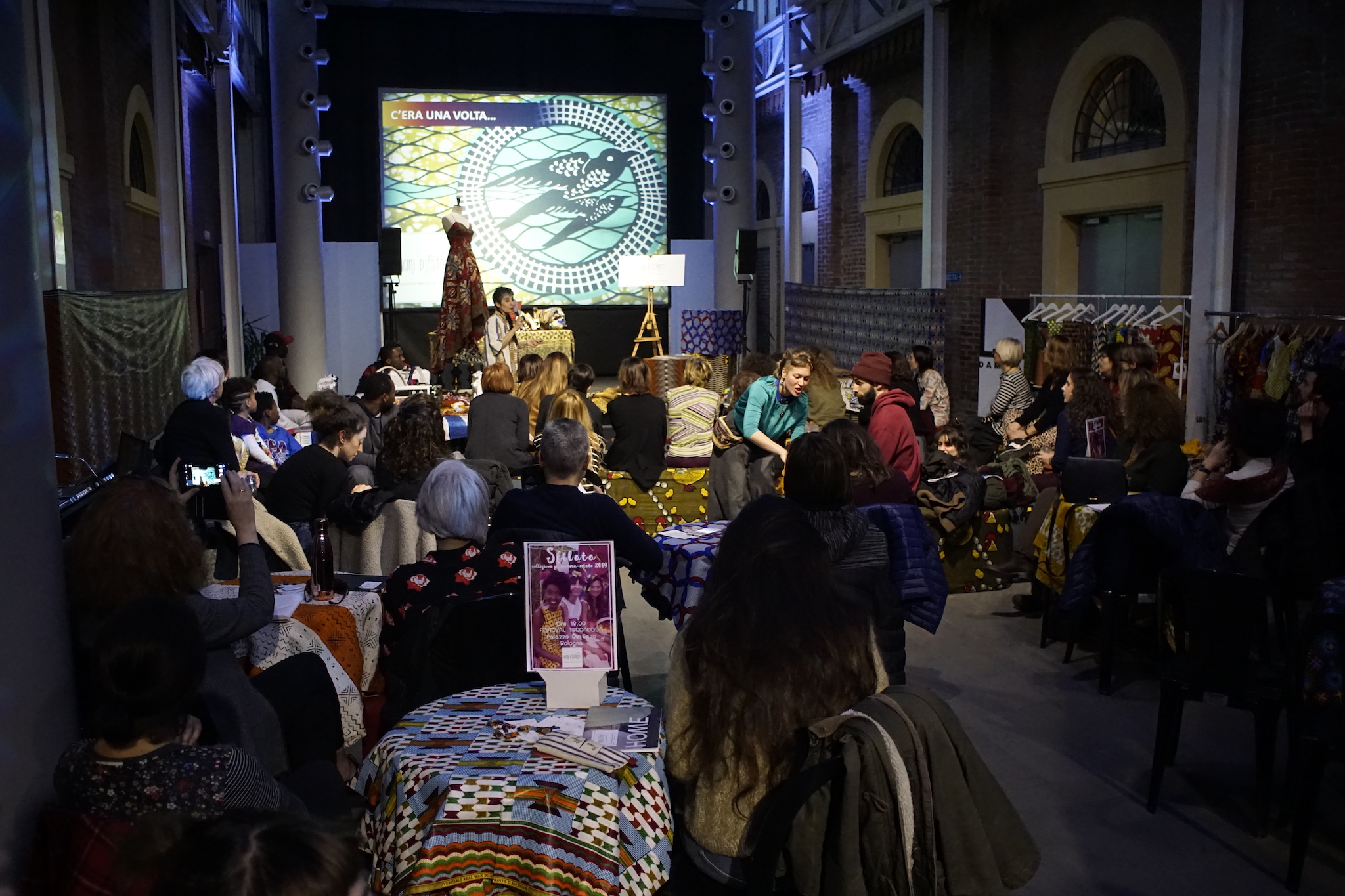

For instance, amongst the cloths, one shows birds flying out of cages. The “You leave, I leave” (from French “Tu sors, je sors”), often worn by newly-weds, comes as a warning from wife to husband, meaning, “if you are unfaithful to me, I will do the same”. Therefore it underlines a relationship that must be based on fair reciprocity. In some other patterns using birds can also make an allusion to the transience of affluence, “rich today, poor tomorrow, for money has wings and can fly away”[1]. The second part of the lesson allowed the participants to immerse in the colourful world of wax design by having a try at sewing small items (headpieces, belts, envelopes…), samples of stories to bring back home.
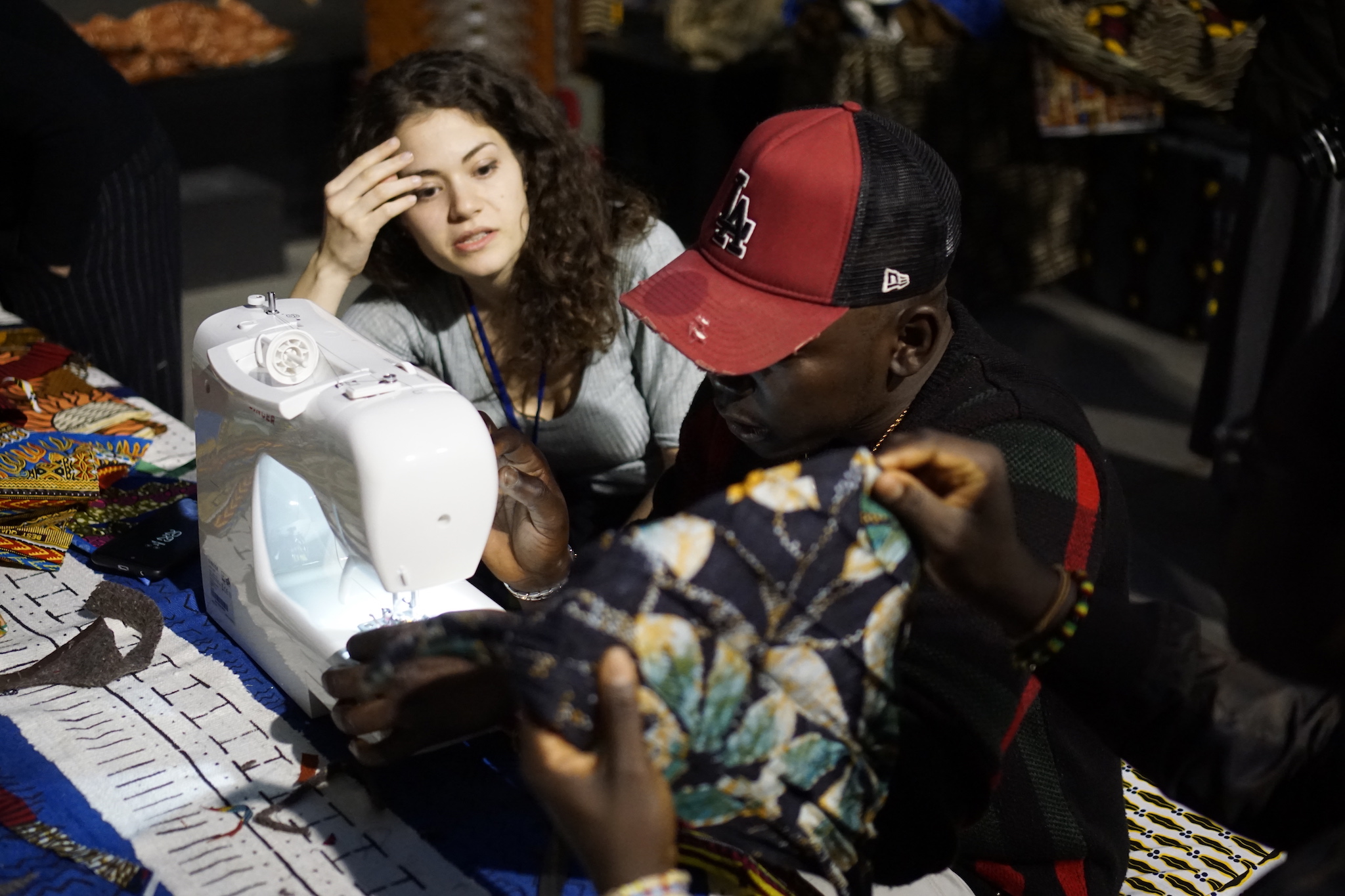
The School of Integration carries on and relocates in Eastern Europe, with Larysa, a Ukrainian-Canadian from Toronto who recently moved to Bologna for her studies. The lesson she taught brought into focus the Ukrainian rite of the eggs, showing the process behind Easter egg painting, faithful to “pysanka”, the traditional method of drawing. The first step was to choose a design to trace on the egg with beeswax, using a tool called “kystka”. The eggs were then dyed in warm colours and once the wax removed, beautiful patterns appeared. Gathered around a long table, everybody was free to recreate or invent a new style, as Larysa told us “the way that the lesson started was that I showed everybody one simple design that they were able to modify later. It was interesting to see that some people took my design and followed it exactly the way I had intended to and some of them took a different twist. Everybody had their own modification; everybody had to put their own creative risks. At the end if you look at all of the eggs that were taught in the same exact way, not one of them resembled one another. That’s the most interesting part of this entire experience.”
Monday evening, 6pm, “Mahmouma Ya Khayi Mahmouma, Mahmouma Had Danya Mahouma”… Sana Darghmouni, who is conducting the lesson about Marocco, starts by reading the lyrics of a song by Nass El Ghiwane. Established in 1971, the group has played an influential role in Moroccan popular music and quickly became the “spokesman of the voiceless”. It was the first band to introduce Western instruments, that the group fused with their traditional sounds and aesthetics inspired by ancient North African Sufi poetry. Travelling across the group’s repertoire, the lecture focused on analyzing the recurrent theme of “torment”, emphasized by the use of the metric form “zajal”. At the time of the Years of Lead, their musical blend won the hearts of the crowd; because of the way their songs were written, which allowed an entire nation to identify itself. The group spoke for an entire generation to whom it was forbidden to discuss about certain political issues. Nass El Ghiwane’s compositions weren’t just music, yet an important act of rebellion. In a moment of exchange with the audience, answering to one of the questions, Sana explained that the group never wanted to hide their messages of protest even if there was a risk of getting arrested. As artists, they felt the need to talk about what was happening, saying things at loud, with no fear. Some of their songs got censured, but it didn’t hinder them from continuing their path in the country and beyond its borders.
After a thrilling opening, the School proceeds on schedule throughout the festival week, with six remaining lessons, all very different from each other. “The grammar of embroidery: decorative designs and colours in traditional Palestinian dresses”, was conducted by Jalal Albess, and reaffirmed that culture plays a significant role in bringing people together. In a warm atmosphere, after learning to distinguish “thobes” from various regions of Palestine, and deepening their knowledge about the Israeli-Palestinian conflict, the audience could then explore another inseparable element of Palestinian identity, the “Dabke” dance. In its essence, this folk dance is more than a tradition that preserves the heritage of Palestine. Overtime it became a medium of communication between different parts of the territory, finding a new narrative, to keep writing the history of the people. Performed by the Donna di Sabbia association to the live sound of Hudud music group, the Dabke converted the lesson into a participatory action, in which anyone could join, adding something of their own to the already existing line, redesigning the space, without barriers nor obstacles.
Vincenzo Spinelli, as a spokesman of the Rom and Sinti community in Bologna came to talk about his personal experience of residential transition, including what it means to live in a place and what happens to those ties after being evicted. Sitting in circle, the participants witnessed a touching moment of truth and candidness, invited to tackle the stereotypes and prejudice towards the community in question, which often leads to picturing them as purposely chosing a life at the margins of society.
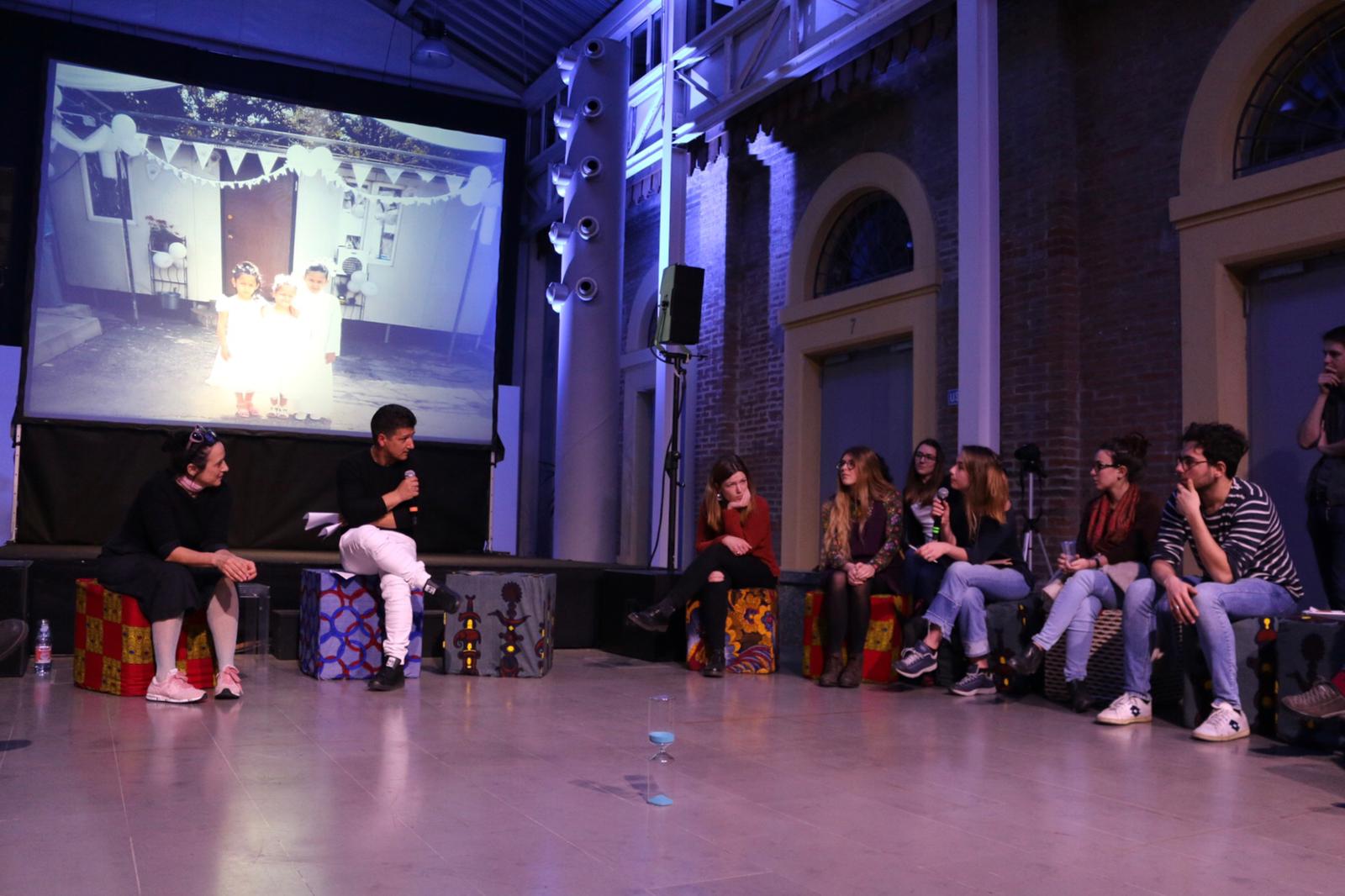
One of the highlights of the project was getting to know the work of WUXU, a research no-profit association created by Chinese students, which focuses on the Italian social reality, Europe- Far East cultural exchanges and practical research on contemporary arts. For the festival, they designed a lesson that transported the audience to a ‘karaoke’ room. In the wake of China’s 1978 economic reform, western music began to make its way into China, with a central role played by the record label Polygram. Karaoke started to become a highly popular form of entertainment and has remained so even today, to the point of influencing daily language, social behaviour and aesthetics. To sustain the discussion with the audience, Zheng Ningyuan used the example of China’s new trend, glass-enclosed mini karaoke booths, to underline the karaoke industry’s fast-paced evolution and the way in which brands’ are looking at modernizing the space to win over the market. Between two facts, thanks to the creation of “italianized” texts - making the reading process possible for non-Chinese speakers - the audience could grab the mic and select from a playlist of songs contaminated with Western and Italian hits: “Gimme! Gimme! Gimme!”, “Bella Ciao”, “Volevo un gatto nero”…
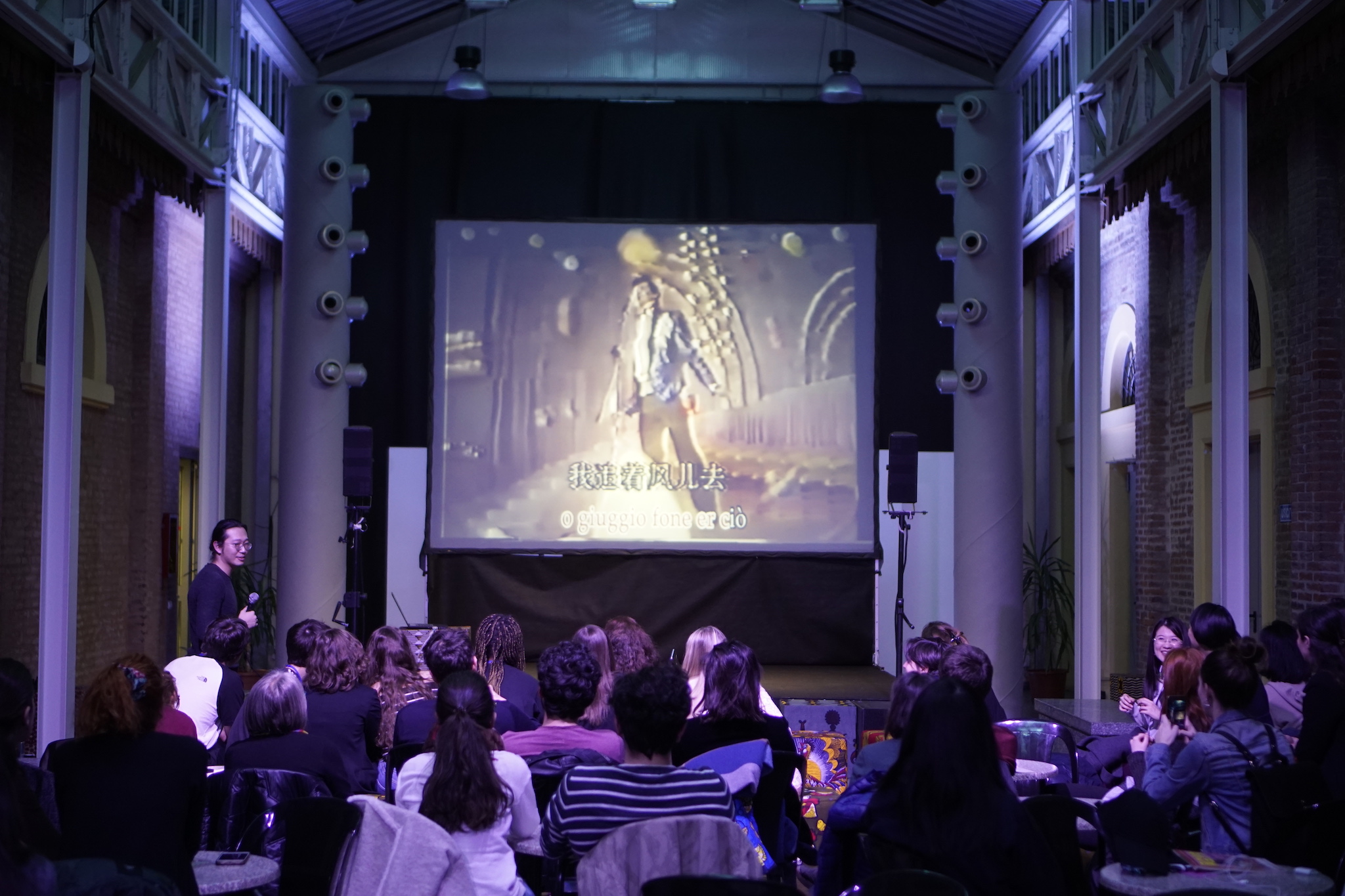
The closing three lessons added a blend of rhythm, sound and taste inside the door of School of Integration. The djembes are waiting for the participants to arrive. With Malick Kaire Gueye they had the possibility to try with their hands, in a collective context, the basic rhythm of the traditional Senegalese drum, the “mbalach”. As stated by Malick, it is the first rhythm you learn as a child, and can also be played on the ‘Sabar’ with one hand and a stick. “1,2,3….Insieme!”(from Italian “Together”) shouts Malick, revealing the great importance he attaches to feeling the beat together. His sense of humour and sensational energy puts a smile on every face. The “mbalach” has many functions; it can communicate, heal, hunt the bad spirits, celebrate, and dance. At DAMSLab, it triggered connection, inner rhythm, laughter and feeling as part of a group. For Malick “this moment gave him a lot of joy, to see all those people who participated. To find an opportunity to share something from your own culture, it gives you an unique feeling, and these situations are fundamental.”
There are probably many facts people don’t know about Peru, beginning with its impressive potato biodiversity, which counts more than 3000 varieties. To name a few…“Papa blanca”, “Papa Amarilla”, “Papa periccholi”, “Papa Peruanita”, “Papa Tarmena”…. They have been grown in the country and in the Andes for thousands of years. Nadia Flores put together an in-depth presentation of some of the registered white, yellow and native potatoes, along with their nutritional values, culinary use and benefits for the health. What better way, to feel reinvigorated than after a radiant “cultivation” dance, which portrays agricultural work, and a degustation of traditional dishes made with “papas”.
Only 1 left, a musical voyage through Persia. With a light effect resembling moonrise, four musicians and a singer take position on stage, enclosed by noble instruments: the “Tar”and “Setar” (long-necked lutes), the “Oud” (short-necked lute), the “Tombak” and “Daf” (drums). Alternating repertoire, history and improvisations, the artists provide a feast for the ears and for the mind, echoing sounds of antiquity, technique and cultural legacy. It may seem probably impossible to learn a skill that has been passed down orally in Persia for centuries; still there lies the challenge for a pioneering experiment such as School of Integration, to awaken and recognize cultural acceptance, without hindrance in front of probable “unknowns”, “fears” or “bounds” that the meeting of cultures can imply.
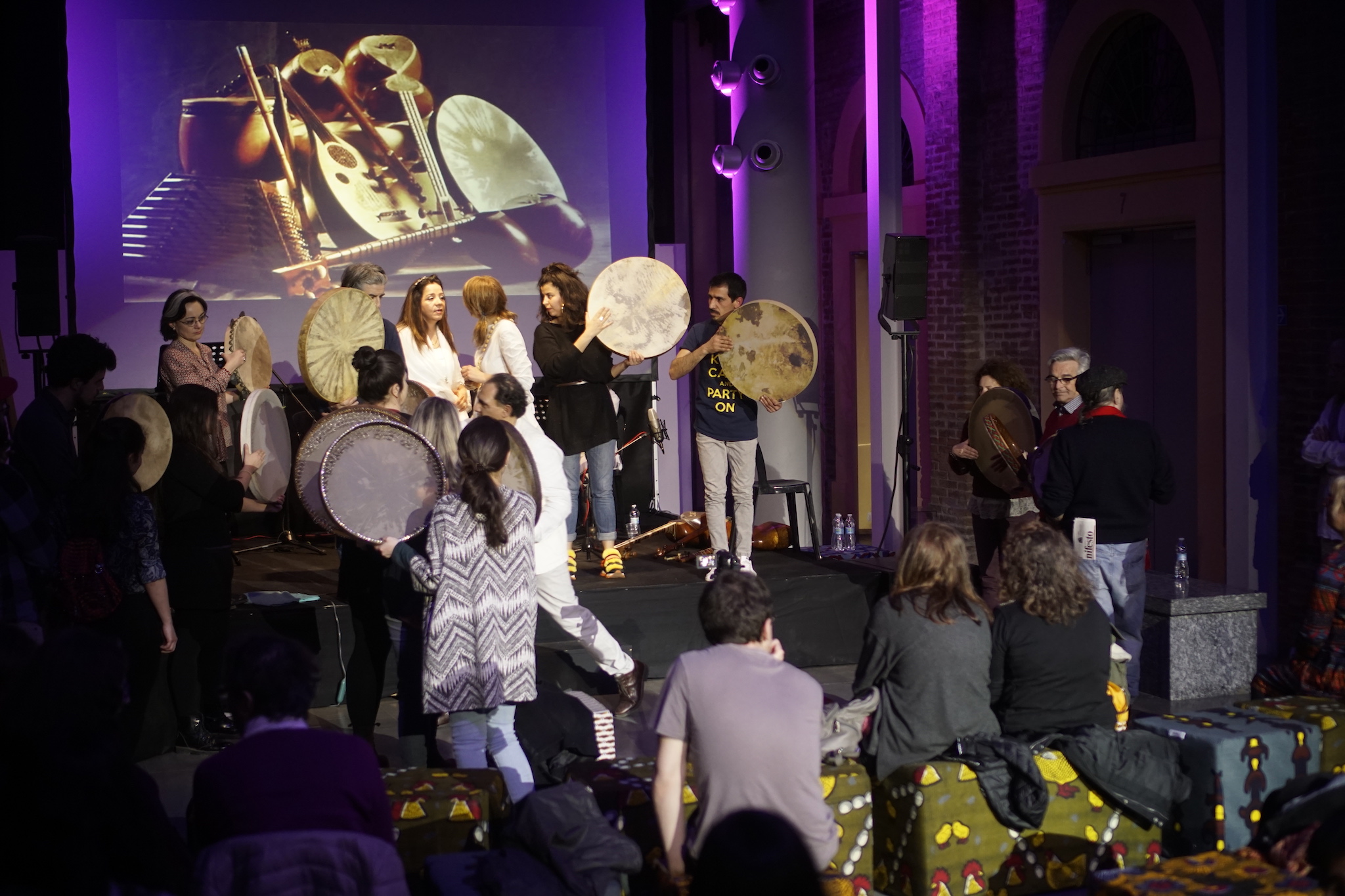
In time of acceleration of change, we need to draw new lines for social cohesion, shifting the lens to stop seeing migrants as a burden in opposition to what the press has been showing across Europe. What means could reduce the gap between perception and reality (used by politicians like a well to draw power from), helping to focus on the contributions and laudable paths refugees have made for them? During the 10 days of the festival, Tania Bruguera’s project School of Integration was the opportunity to test the prospect of a two-way model for teaching, fostering interaction between ethnic minorities and inhabitants who shape together the narratives of the city. Bringing communities together, it is like writing a novel with multiple points of view, which allows the reader to understand the story from different perspectives. A story may change depending on who’s telling it, and what would happen if this principle would be applied to cultural narratives?
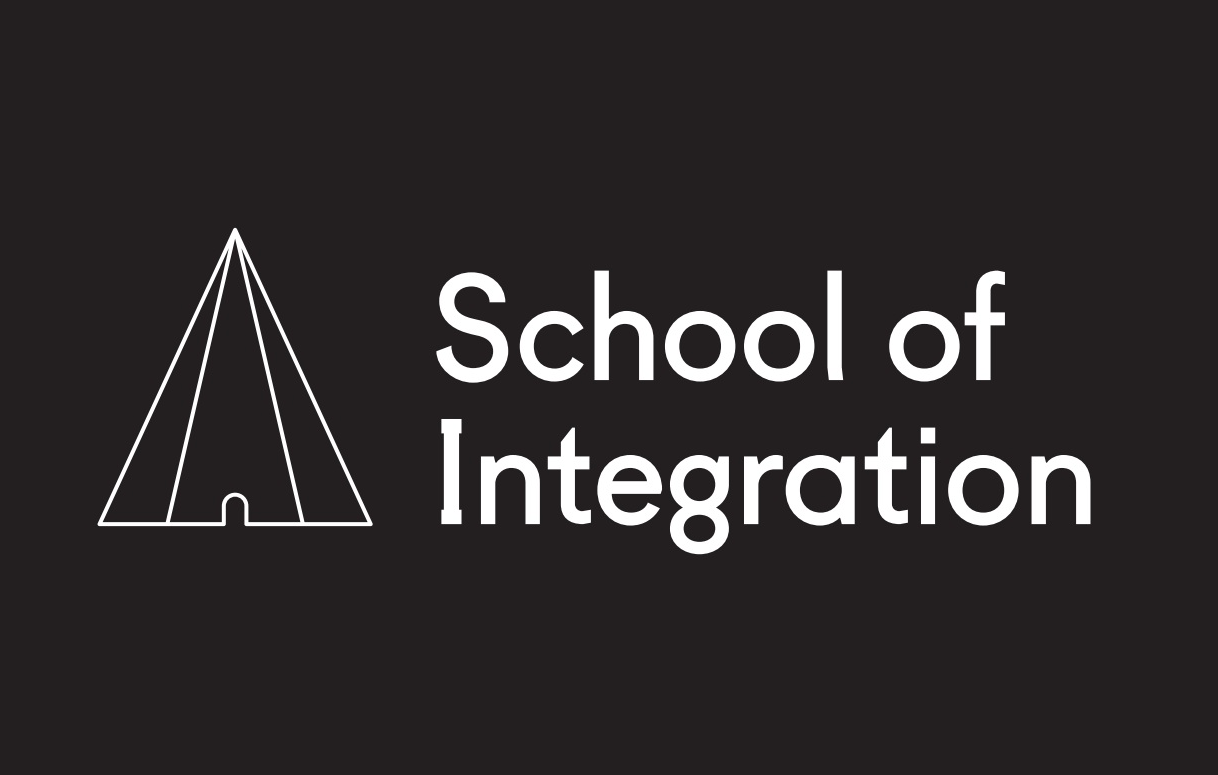 School of Integration took place at DAMSLab in Bologna from 1 – 10th March 2019 in the framework of Atlas of Transitions Biennial “HOME” organised by ERT – Emilia Romagna Teatro Fondazione in collaboration with the Department of Sociology and Business Law of the University of Bologna and Cantieri Meticci. A warm thank you to the associations who participated in the School of Integration: Centro Interculturale Zonarelli, Next Generation Italy, Ateliersi, Associazione Vicini D’Istanti, WUXU, Associazione Culturale Italia-Ucraina, ALMI Associazione Lavoratori Marocchini in Italia, Gruppo musicale Hudud, Associazione Donne di Sabbia, Assopace Palestina, ACABAS, Associazione Peruviani Uniti di Bologna, Compagnia Teatrale Ma2ta a Teheran, Associazione Culturale Iraniana a Bologna, Associazione Musicale Lulian
School of Integration took place at DAMSLab in Bologna from 1 – 10th March 2019 in the framework of Atlas of Transitions Biennial “HOME” organised by ERT – Emilia Romagna Teatro Fondazione in collaboration with the Department of Sociology and Business Law of the University of Bologna and Cantieri Meticci. A warm thank you to the associations who participated in the School of Integration: Centro Interculturale Zonarelli, Next Generation Italy, Ateliersi, Associazione Vicini D’Istanti, WUXU, Associazione Culturale Italia-Ucraina, ALMI Associazione Lavoratori Marocchini in Italia, Gruppo musicale Hudud, Associazione Donne di Sabbia, Assopace Palestina, ACABAS, Associazione Peruviani Uniti di Bologna, Compagnia Teatrale Ma2ta a Teheran, Associazione Culturale Iraniana a Bologna, Associazione Musicale Lulian
Following Bologna, Tania Bruguera’s work will be presented at Manchester International Festival this summer, featuring classes based around language, culture, ethics, politics, economics given by people who have made Manchester their home from another country.
Written by Konstancja Dunin-Wasowicz



